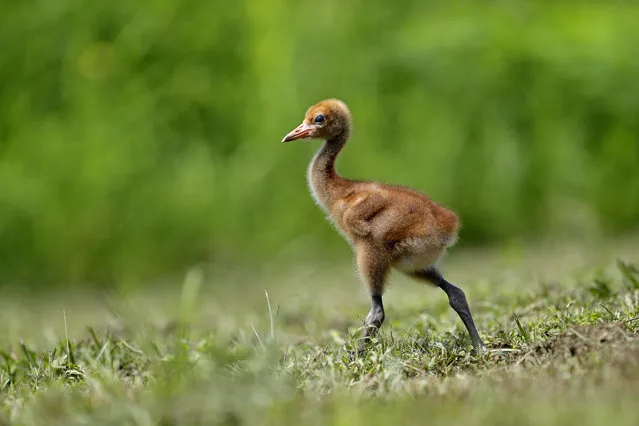
A recently born whooping crane chick, a critically endangered species, walks in an enclosure at the Audubon Nature Institute's Species Survival Center in New Orleans, Thursday, June 21, 2018. Their numbers dwindled to 21 in the 1940s, including a handful in Louisiana. That’s grown to 670 today – about 510 in the wild, the rest in captivity. (Photo by Gerald Herbert/AP Photo)
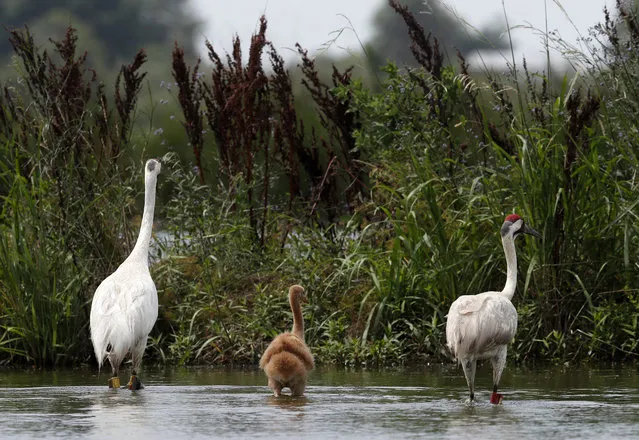
A pair of whooping cranes, with their recently born chick, forage through a crawfish pond, in Jefferson Davis Parish, La., Monday, June 11, 2018. Biologists estimate more than 10,000 whooping cranes had lived in North America before habitat loss and overhunting nearly killed them off. (Photo by Gerald Herbert/AP Photo)
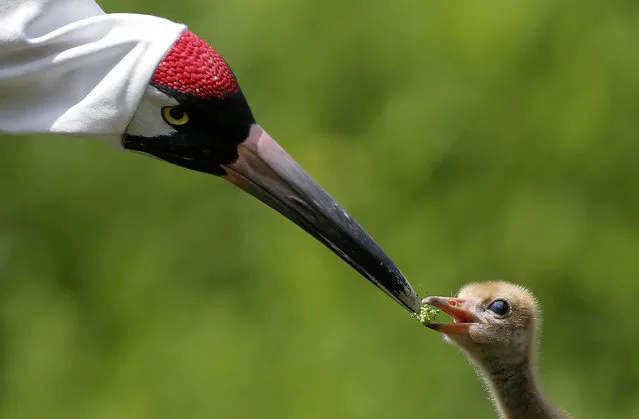
A keeper wearing a “crane suit”, to resemble a parent whooping crane, feeds a recently born chick, a critically endangered species, with her hand in a puppet, at the Audubon Nature Institute's Species Survival Center in New Orleans, Thursday, June 21, 2018. To ensure the chicks don’t take to people, keepers wear the disguises to hide the human shape and obscure the face. The crane-head puppet with a moveable beak is carved and painted by a Japanese artist. (Photo by Gerald Herbert/AP Photo)
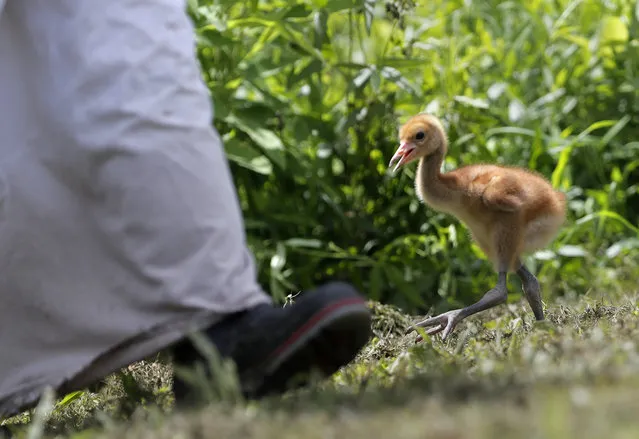
A recently born whooping crane chick, a critically endangered species, walks behind a keeper in a “crane suit”, designed to resemble a parent so it does not imprint on a human, in an enclosure at the Audubon Nature Institute's Species Survival Center in New Orleans, Thursday, June 21, 2018. “Whooping cranes are native to Louisiana. We used to have them here, all over the place, and most people don’t even know what they look like anymore, which is rather sad”, said Heather Holtz, a crane keeper at the center. (Photo by Gerald Herbert/AP Photo)

An adult whooping crane, a critically endangered species, is seen in captivity at the Audubon Nature Institute's Species Survival Center in New Orleans, Thursday, June 21, 2018. “Whooping cranes are native to Louisiana. We used to have them here, all over the place, and most people don’t even know what they look like anymore, which is rather sad”, said Heather Holtz, a crane keeper at the center. (Photo by Gerald Herbert/AP Photo)
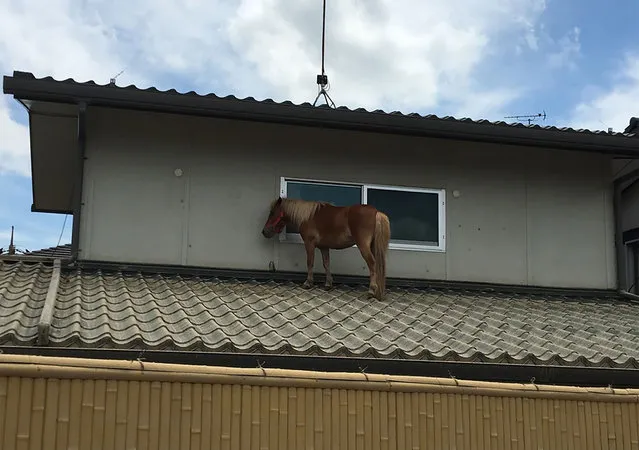
This handout picture taken on July 9, 2018 by the NGO Peace Winds Japan shows a miniature horse stranded on a rooftop due to the recent flooding in the Mabicho area in Kurashiki, Okayama prefecture. The miniature horse who survived deadly floods by swimming to a rooftop has captured hearts in Japan, as the country tries to recover from record rains that killed at least 179 people. (Photo by AFP Photo/Peace Winds Japan)
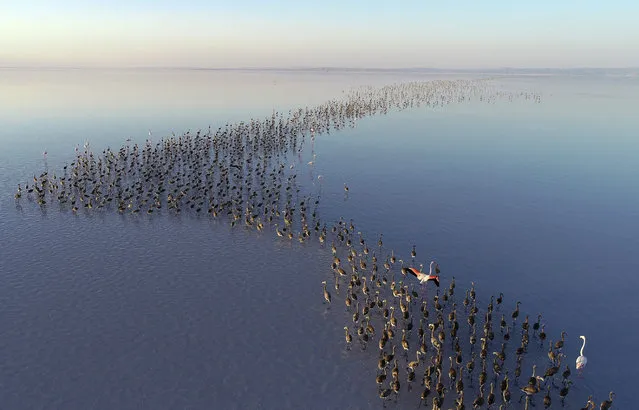
lamingos are seen on the Lake Tuz after their incubation period in Aksaray, Turkey on July 12, 2018. (Photo by Murat Oner Tas/Anadolu Agency/Getty Images)
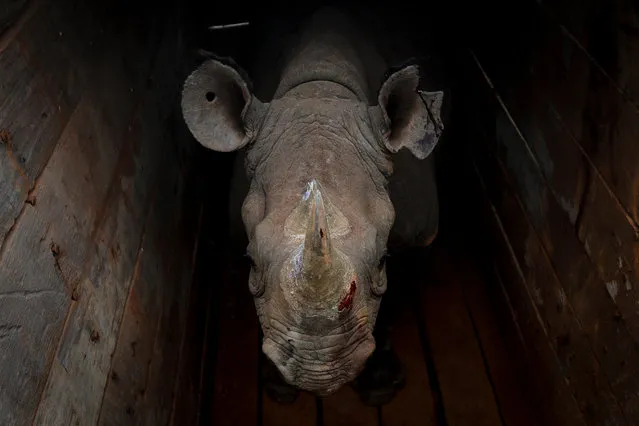
A female eastern black rhino looks on inside a crate before being transported during a rhino translocation exercise in Nairobi National Park in Nairobi, Kenya, 26 June 2018. Kenya Wildlife Service (KWS) will move 14 black rhinos from Nairobi and Lake Nakuru National Park to Tsavo East National Park in an effort to give them safer habitat amid public outcry over the construction of the controversial Standard Gauge Railway that cuts through the Nairobi Nationa Park. Black rhinos, whose populations declined dramatically during the 20th century due to hunting by European settlers, are listed as “Critically Endangered” by the World Wildlife Fund (WWF) and are still threatened by poaching for their horns. (Photo by Dai Kurokawa/EPA/EFE)
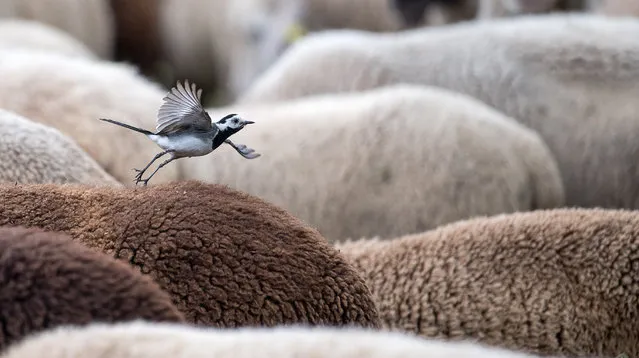
A wagtail flies from a sheep in Herrenberg, southern Germany on July 10, 2018. (Photo by Sebastian Gollnow/AFP Photo/DPA)
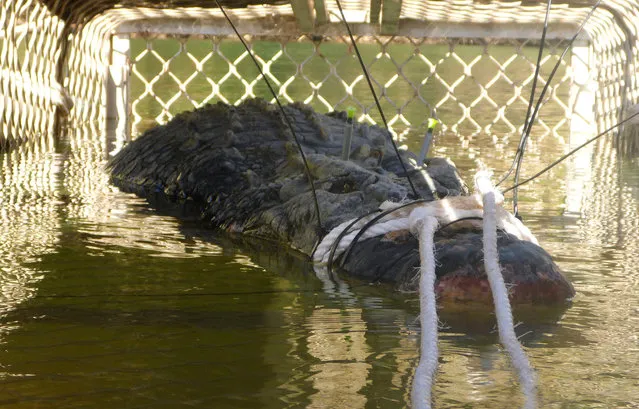
This handout photo taken on July 9, 2018 and released on July 10 by the Northern Territory Parks and Wildlife shows a large saltwater crocodile weighing 600 kilograms (1,328 pounds) in a trap after being caught after an eight- year hunt, in the Northern Territory town of Katherine. The 4.7- metre (15.4- foot) beast was found in a trap downstream from the northern outback town of Katherine after first being spotted in 2010. (Photo by AFP Photo/Northern Territory Parks and Wildlife)
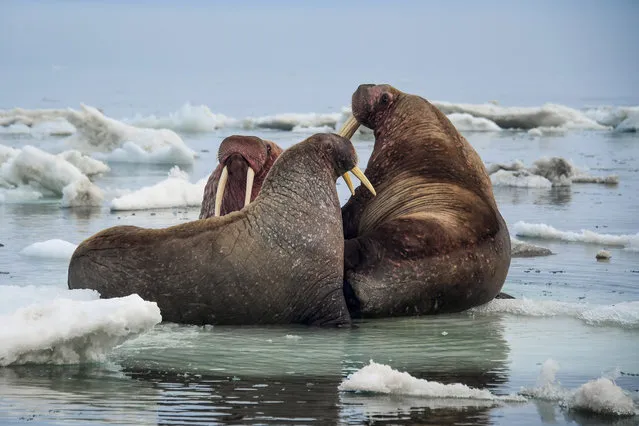
Pacific walruses on an ice floe by Cape Dezhnev, Chukotka, the easternmost mainland point of Russia on June 23, 2018. (Photo by Yuri Smityuk/TASS)
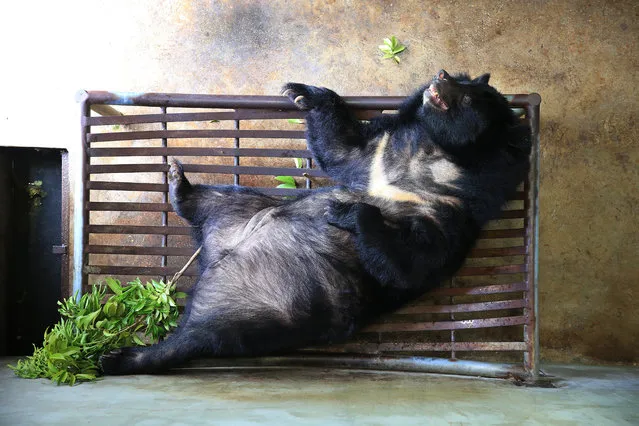
A moon bear plays inside its sanctuary at the Vietnam bear rescue centre, which is operated by international organization Animals Asia, in Tam Dao national park, about 70 kilometers from Hanoi, Vietnam, 10 July 2018. Animals Asia together with the Vietnam Traditional Medicine Association launched two books: “The technical instruction to plant and cultivate herbal alternatives to bear bile” and “Care and welfare of Asiatic black bears and Malayan sun bears in rescue centers” on 10 July, aiming to promote herbal alternatives to bear bile and make better impact on the protection of bears in Vietnam. Animals Asia has rescued over 600 bears across Vietnam and China so far. (Photo by Luong Thai Linh/EPA/EFE)
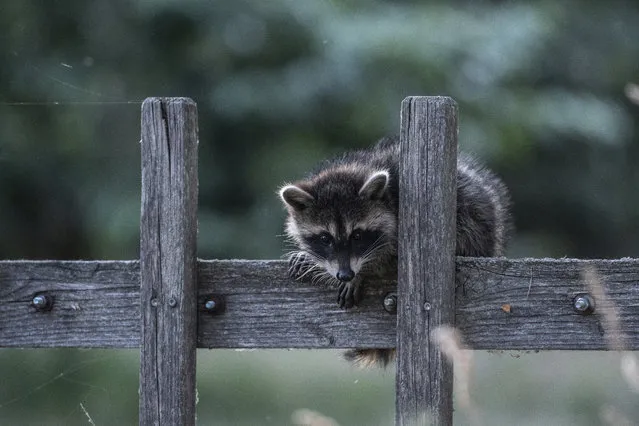
In this July 4, 2018 photo a raccoon sits on a fence in Prietzen, eastern Germany. (Photo by Paul Zinken/DPA via AP Photo)
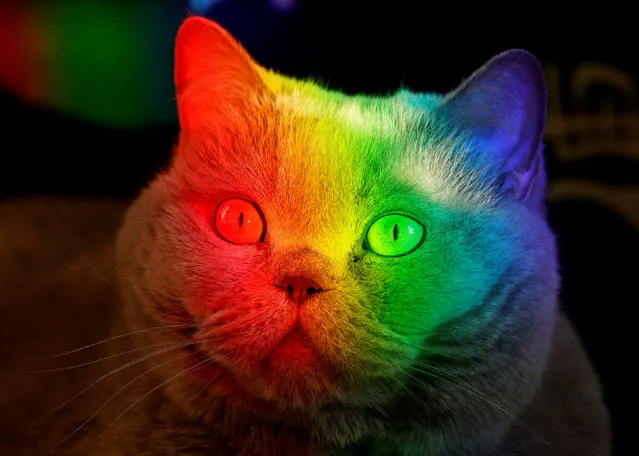
A British Blue cat is lit up by sunlight diffracted through an aquarium at an apartment in the Siberian city of Krasnoyarsk, Russia July 8, 2018. (Photo by Ilya Naymushin/Reuters)
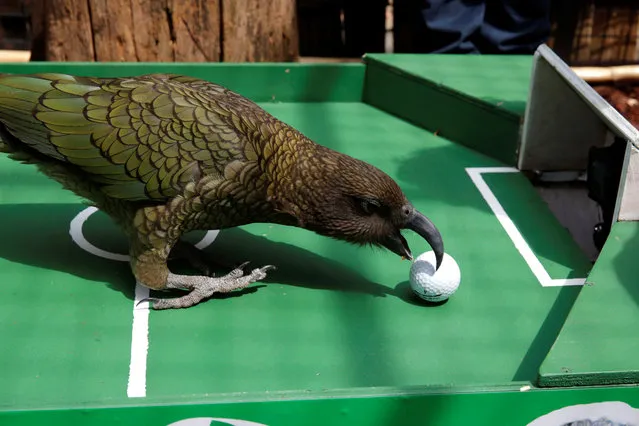
Newton, a Kea Parrot, is seen after it predicted a French win for the Uruguay-France World Cup game at the Menagerie du Jardin des Plantes in Paris, France on July 5, 2018. (Photo by Philippe Wojazer/Reuters)
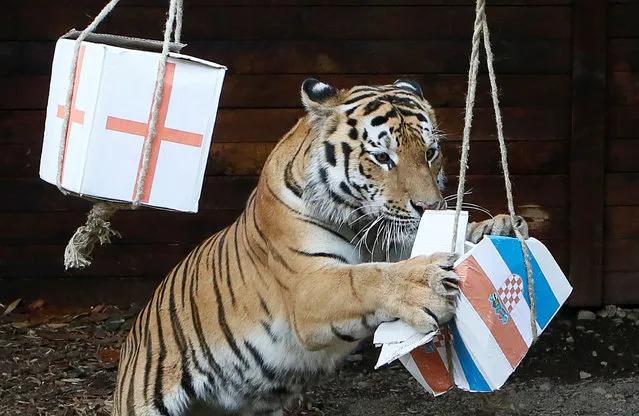
Bartek, a five-year-old Amur tiger, chooses Croatia while attempting to predict the result of the soccer World Cup semi-final match between Croatia and England during an event at the Royev Ruchey Zoo in Krasnoyarsk, Russia on July 10, 2018. (Photo by Ilya Naymushin/Reuters)
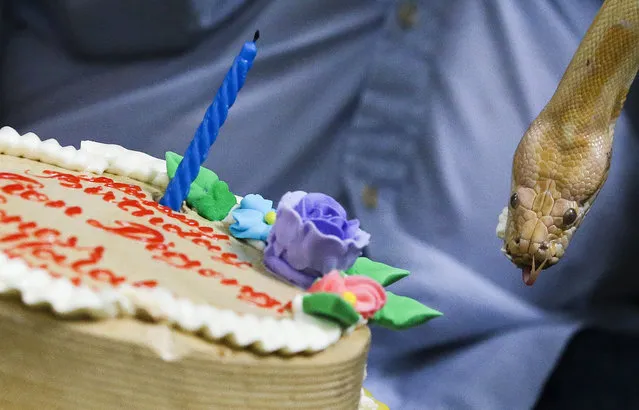
An albino python has cake icing on its face as he is bought out to join an event to celebrate the first birthday of two lions at the Malabon zoo, Manila, Philippines on Thursday, July 12, 2018. The zoo is popular among students for its educational tours. (Photo by Aaron Favila/AP Photo)
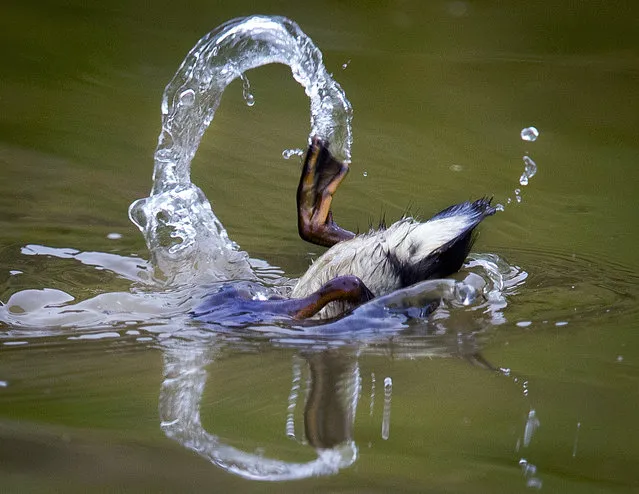
A duckling dives in a small pond in the outskirts of Frankfurt, Germany, Wednesday, July 4, 2018. (Photo by Michael Probst/AP Photo)
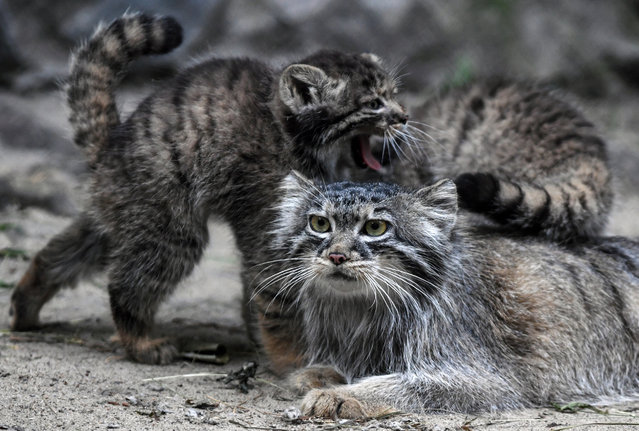
Pallas' s cat kittens with theit mother in an enclosure at the Novosibirsk Zoo, Novosibirsk, Russia on July 11, 2018. Pallas' s cat, also known as manul, is a small wild cat native to montane steppes of the Central Asia and listed as an endangered species. (Photo by Kirill Kukhmar/TASS)
15 Jul 2018 00:03:00,
post received
0 comments
